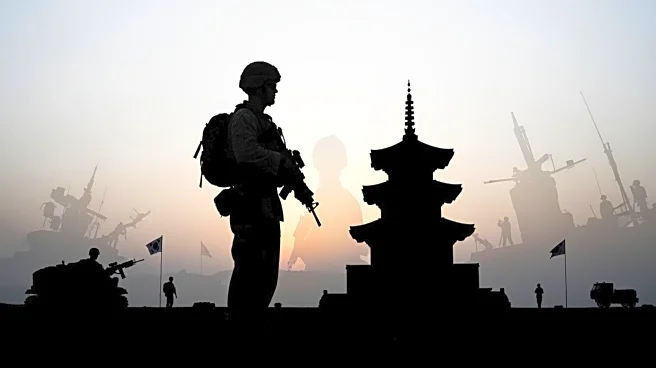What's Happening?
U.S. and Republic of Korea (ROK) Marines have concluded the Ulchi Freedom Shield 25 (UFS 25) exercise, a key event aimed at strengthening combat readiness and alliance-building between the two nations. This exercise, conducted under the 1953 ROK-U.S.
Mutual Defense Treaty, coincided with the Marine Corps' 250th anniversary and included advanced simulations alongside traditional camaraderie. The Ulchi series began in 1968 following North Korea's Blue House Raid and has evolved over the years to incorporate modern hybrid threat countermeasures such as cyberattacks and drone swarms. This year's exercise focused on urban terrain clearance and joint fire support, preparing for operations in contested Indo-Pacific waters.
Why It's Important?
The Ulchi Freedom Shield 25 exercise is significant as it reinforces the military alliance between the U.S. and South Korea amid ongoing tensions with North Korea. By integrating Joint All-Domain Operations, the exercise addresses evolving threats and enhances readiness for potential conflicts in the region. The collaboration between U.S. and ROK Marines fosters trust and deters aggression, contributing to stability on the Korean Peninsula. The exercise also highlights the importance of adaptive logistics and strategic shifts in response to geopolitical challenges, ensuring preparedness in an unpredictable environment.
What's Next?
Future iterations of the Ulchi Freedom Shield exercise are likely to continue focusing on joint operations and technological advancements to counter emerging threats. The ongoing collaboration between U.S. and ROK forces will play a crucial role in maintaining regional security and deterring potential aggression from North Korea. As geopolitical dynamics evolve, the exercise may incorporate new strategies and technologies to address challenges such as cyber warfare and drone attacks, ensuring the alliance remains resilient and capable of responding to threats.
Beyond the Headlines
The Ulchi Freedom Shield exercise not only strengthens military capabilities but also serves as a symbol of the enduring partnership between the U.S. and South Korea. It reflects the historical sacrifices made during the Korean War and underscores the importance of maintaining peace through strategic alliances. The exercise's evolution from Cold War origins to a multi-domain focus highlights the adaptability of military strategies in response to technological advancements and geopolitical shifts, ensuring long-term stability in the region.

















